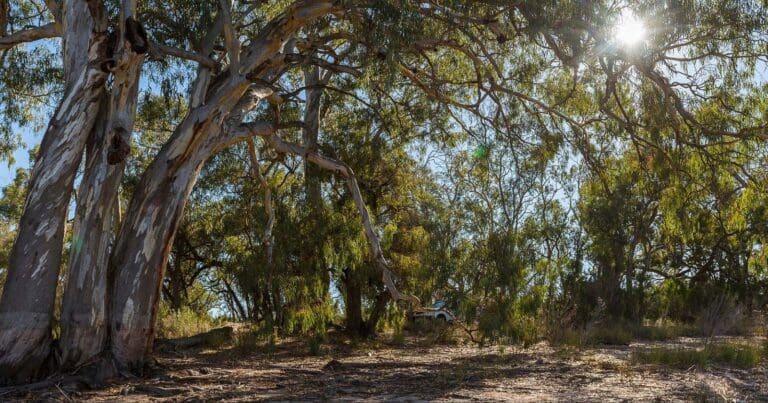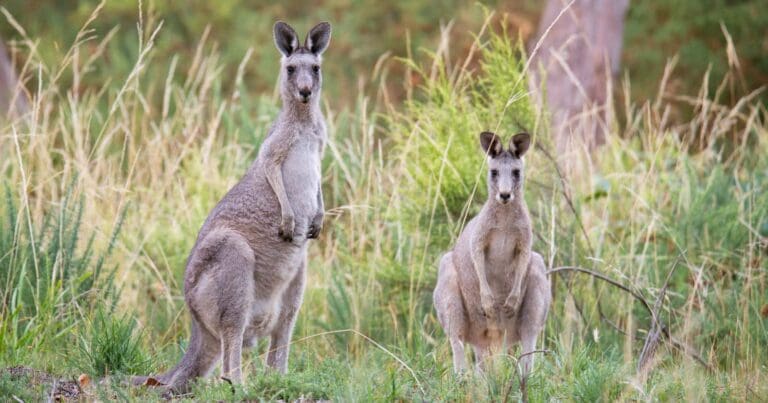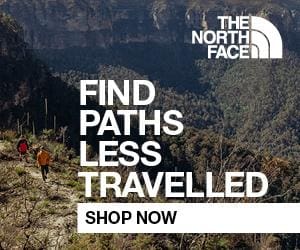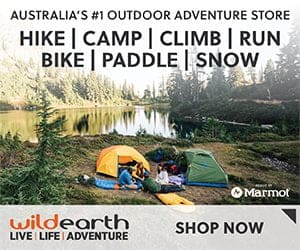Trail Fast Facts
Mournpall Lake Loop is a 9.8km, grade 3 hike in the Hattah-Kulkyne National Park, Victoria. This hike typically takes 3 hrs to complete.
Hike Overview
Starting at the Lake Mournpall camping area, this loop walk follows the northern edge of Lake Mournpall before circling north around Lake Konardin passing through River Red Gum flood plains and Mallee dunes. The walk showcases the dramatic changes in vegetation, as you get closer and further away from water. Keep an eye also for the abundant wildlife. Kangaroos and emus can frequently be spotted, as well as a variety of birds, including wedge-tailed eagles, whitebellied sea eagles and whistling kites.
Wildlife enthusiasts should keep their eyes peeled for emus and three kinds of kangaroo (Red, Eastern Grey and Western Grey) especially at dawn and dusk. The park has a rich variety of birdlife ranging from wetland species such as pelicans, ducks and spoonbills to dry mallee specialists such as Mallee fowl and emu wrens. Fishing for Murray Cod and Golden Perch (Yellowbelly) provide good sport for anglers.
Camping
There are two designated campgrounds in the park with basic facilities, including non-flush toilets, fireplaces and picnic tables. They are at Lake Hattah and further north at Lake Mournpall. Advance bookings and payment are required for these sights via the Parks Victoria website. Other river camping areas without facilities are available at Ki Bend, Firemans Bend and Jinkers Bend, all along the Murray at the eastern edge of the park. No booking or fees are required, although these areas are best accessed with a 4WD.
Lake Mournpall Camping Area offers 16 unpowered campsites, suitable for tents, camper trailers, campervans and caravans. Campground facilities include non-flush toilets, fireplaces and picnic tables. Individual campsites cannot be reserved, please select your campsite(s) within the campground on arrival. Advanced bookings and payment are required year-round. Each campsite holds a maximum of six people. Please book multiple sites for bookings of more than six people.
Track Grade
Grade 3 (Moderate) - Walks for Most Fitness Levels: Grade 3 on the AWTGS represents moderate walking tracks. These are ideal for walkers with some fitness who are comfortable with some hills and uneven terrain. While suitable for most ages, some bushwalking experience is recommended to ensure a safe and enjoyable experience. Tracks may have short, steep hill sections, a rough surface, and many steps. The total distance of a Grade 3 walk can be up to 20 kilometers.
Map and GPX file
Max elevation: 65 m
Min elevation: 44 m
Total climbing: 189 m
Total descent: -189 m
Trail Location (trailhead)
Sorry, no records were found. Please adjust your search criteria and try again.
Sorry, unable to load the Maps API.
Getting there
Hattah-Kulkyne National Park is half way between Ouyen and Mildura, off the Calder Highway. It’s a hefty 5.5 hours’ drive from Melbourne, but only 45 minutes due south of Mildura. Most visitors enter via the Hattah Entrance Road and head directly for the Lake Hattah Campground. The park extends north and east, covering 48,000 hectares, before hitting the Murray River off Hattah–Robinvale Road not far from the small village of Liparoo. Many of the park’s best spots are accessible in a 2WD car, but some tracks are 4WD only. Be especially careful if there’s been recent rain.
Photo gallery
If you have any photos from this hike and are happy to share them, please upload your .jpg files here.
Please note: Uploading photos does not transfer ownership of copyright away from you. If requested, you will be credited for any photos you provide and can ask they be deleted at any time.
About the region
Hattah-Kulkyne National Park lies in typical mallee country with extensive low scrub and open native pine woodland. Superbly adapted birds, animals and vegetation thrive in the poor, sandy soils and searing summers. The freshwater Hattah Lakes is seasonally filled by creeks connected to the Murray, providing food and shelter for waterbirds and fish. These lakes can remain full for up to ten years without flooding, but flooding generally occurs once every two years. Camping, walking, bike riding and canoeing are popular here and in the adjoining Murray-Kulkyne Park.
Similar trails nearby
Explore Safe
While planning your hike, it’s important to check official government sources for updated information, temporary closures and trail access requirements. Before hitting the trail, check local weather and bushfire advice for planned burns and bushfire warnings and let someone know before you go. Plan ahead and hike safely.
Let someone know
Adventure with peace of mind: Fill out your trip intentions form. Before you hit the trail, fill out an online form to privately send important details about your hike to your family or friends. If you don’t return on time, they can easily alert emergency services, preventing worry and ensuring a swift response. Hike with peace of mind and enjoy your outdoor adventure to the fullest. Be smart, be safe: Register your plans here.
Gear to consider
What you carry in your pack will depend on the weather, terrain, time of year, type of adventure, and personal preferences. Having trouble deciding what gear’s right for you? My free planning, food and packing checklists provide an introduction to things your could consider (as well as the Ten Essentials) on your day, overnight and multi-day adventures. Customise your kit according to your personal needs, always considering safety first.
Suggest an edit
Trail changed? New features discovered? Has the route changed? Trail permanently closed? Help fellow hikers by suggesting edits! Click above to update route descriptions, GPX file, trail features (like boardwalks), or access conditions (like parking availability). Help me keep the trails info fresh!
Weather
Acknowledgement of Country
Trail Hiking Australia acknowledges the Traditional Owners of the lands on which we hike and pay respects to their Elders, past and present, and we acknowledge the First Nations people of other communities who may be here today.











